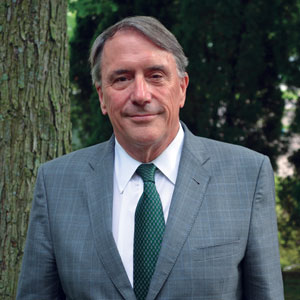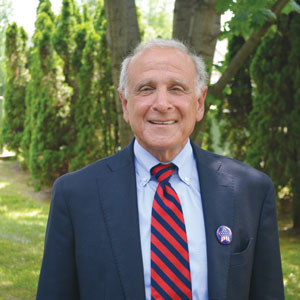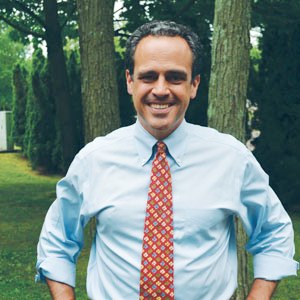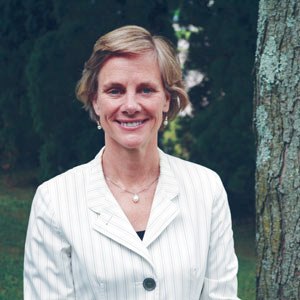by Timothy McQuiston You can quickly recognize someone running for governor this year: They’re too tanned. “It’s the parades,” Phil Scott said with a leathery smile. Scott is Vermont’s lieutenant governor and one of five major candidates hoping to succeed Governor Peter Shumlin, who is stepping down. Businessman Bruce Lisman is the other Republican and the Democrats are former Google executive and legislator Matt Dunne, former ambassador and legislator Peter Galbraith and former Transportation Secretary and legislator Sue Minter.
The other commonality among them: They question the wisdom of the early primary, which will winnow the field down to two on Tuesday, August 9. It adds a wildcard to the race that could benefit the underdogs, or not.
As Galbraith put it: “I think it’s bad for Democracy. Whether it’s good or bad for me, I don’t know.”
The early date adds uncertainty that even their own internal polling cannot predict. Typically the primaries are during the county fair season in late summer, where the candidates can work the crowds while they try and work off the corn dogs.
The mid-summer primary also has been more subdued, especially compared to the rollicking race six years ago. Some of that must be due to the vacation-time campaigning the candidates have had to endure.
Perhaps the presidential politics with big name and verbose candidates on both sides has stolen the spotlight from the local candidates. But it’s also true that the out-sized personalities of Shumlin and Brian Dubie from six years ago are also missing.
None of these current gubernatorial candidates are famous for sucking the air out of a room.
All are thoughtful and the most dynamic campaign stunt, if one can even call having a bit of fun a stunt, was Sue Minter hula-hooping during a Fourth of July parade.
Other commonalities include changing Vermont Health Connect (fixing, re-working, or killing), the state’s health insurance exchange. They agree the economy needs to grow. They’d all like to lower property taxes. And they all see the necessity of balancing the state budget, which has been a constant struggle since Governor Snelling and Speaker Ralph Wright committed to keeping it balanced by any means necessary during the recession of 1991.
Vermont Health Connect, which has never worked correctly since it went live on October 1, 2013, and immediately crashed, has been vilified by Shumlin’s political opponents and has frustrated even his closest supporters. Shumlin himself only saw it as a step toward a single-payer, Canadian-style health insurance system. Cost of that plan ultimately forced to Shumlin to rescind that effort, which in any case always seemed a long shot.
Bruce Lisman insists he would dissolve it immediately and move to the federal exchange. Matt Dunne and Sue Minter would first want to try and fix it, but only if it could be done efficiently, and if not then move on. The other candidates see it as a failed endeavor.
Scott suggested that the state could piggyback in some way onto another state’s technology, or if that can’t be worked out then move policy-holders onto the federal insurance exchange. Dunne also would move in a similar direction if all hope is lost on VHC
Galbraith also sees that happening, but wants the state not to abandon the concept of at least a partial single-payer plan for universal, zero-cost to the patient for primary care. He said it won’t cost that much and he has a way to pay for it. It would also help hold down health care costs over time because getting that ugly mole on your hand treated now, instead of it leading to melanoma, will result in better health outcomes and vastly lower treatment costs.
But for the near future, it seems the state is stuck with Vermont Health Connect.
As much as Bruce Lisman would want to scrap the whole thing on his first day in office (including the small business mandate) and move quickly to the federal exchange, the new governor might not be able to effect change until January 1, 2018.
To those who are suffering with Vermont Health Connect, that might seem a lifetime.
But because the anniversary date for policy holders is the first of the year, the new governor would need to wait nearly a full year to implement a change. Governor Shumlin could start that process now if he so chooses to move the transition up a year, but no one expects that. There also could be an act of the Legislature, but that would seem even more unlikely.
All the candidates acknowledge the critical need for property tax relief, but the means of getting there varies among them.
Lisman and Scott see it as part of a tax cutting program (the state budget is growing faster than the economy and school budgets keep growing despite a steep drop in students), while Dunne sees it as a cost reduction plan. Galbraith, consistently offering the most radical plans, has no problem reducing the property tax burden by dumping income tax loopholes and raising personal income taxes on wealthier Vermonters as needed.
Sue Minter said all these plans, including motivated local school boards, will have a difficult time lowering costs as long as health care insurance costs keep rapidly climbing. Lisman wants to keep local control also, but schools need to cut costs, which could include increasing classroom sizes and reducing staff.
But for the most part the candidates acknowledge that issues like balancing the budget, reducing property taxes and bringing down the cost of health insurance will be a process for whomever is elected governor, one they might not see achieved in their own political lifetimes.
Along with the budget, Vermont Health Connect and property taxes, Vermont Business Magazine asked the candidates about cleaning up Lake Champlain (and the consequence on dairy farmers), and how Vermont can manage to keep young people in the state, at a time when population growth is stagnant and the state gets older.
The answers below focus more directly on the economy. A comprehensive version of these interviews with video can be found at vermontbiz.com
The Economy
 Peter Galbraith
Peter Galbraith
“The first thing I’d do as governor is raise the minimum wage to $15 an hour; $12:50 immediately and $15 by 2021,” Democrat Peter Galbraith said. “It’s actually the reason I got into the race. To me, it is the single most important thing we can do to reduce inequality in the state of Vermont.”
“What I’m proposing,” Galbraith said, “is a 50 percent pay raise for those who make the least. But it’s also great for the economy, so it will help grow the economy, because low wage workers spend their extra income. They spend almost all of it. They spend it locally, so there’s a significant economic stimulus.”
The vast majority of the jobs are in the service economy, he said, so the state would not see the kind of flight of industries. You can’t move the ski mountains or the fast-food restaurants out of the state.
He said a higher minimum wage would increase sales taxes and reduce the earned income tax credit, for a state savings of $18 million.
“It’s a win, basically, for everybody, so that would be my top priority,” Galbraith said. “It helps address the issue of inequality and it addresses the issue of affordability. It helps grow the economy.”
He then would get rid of tax loopholes to save another $26.5 million. In addition to that, he would restructure the state’s business incentive plan, (Vermont Employment Growth Incentive, or VEGI, which rewards companies for growing employment in Vermont that would not otherwise occur) to make it an equity participation or loan program, instead of a “giveaway program.” This would save another $2 million.
Galbraith would turn much of that extra money into free, four-year tuition to any Vermont student who attends one of the Vermont State Colleges.
“Education makes an enormous difference over a lifetime of earnings,” he said, while vocational training can be short-lived as technology and the changing demands of the global economy change. Skills learned in college can be transferred regardless of how the economy evolves.
 Bruce Lisman
Bruce Lisman
Republican Bruce Lisman did not offer any magic elixir to improving the economy. It will be a process and take time. It will require finding efficiencies, which he is confident do exist, and being transparent about taxation and spending.
But of the many people Lisman’s talked to with a myriad of concerns, it generally came down to one issue: “People got problems and they need somebody to fix them.”
“In Vermont, people say, No one listens to me… I work for the government, the government doesn’t work for me.”
Lisman said he will manage the government and keep the growth in the state budget generally equal to the growth in the economy, which he said is right around 2 percent “and heading toward 1 percent.”
He, like all the candidates, does not see places to cut services and insists that programs will remain intact.
Lisman said the state must spend money on the opiate problem, on cleaning up Lake Champlain as mandated by the EPA, on workforce development and on building technology.
Lisman also questions economic stimulus programs, because if you’re paying your friend to be your friend, as soon as you stop paying him, he will no longer be your friend.
“Let’s reconsider the nature of economic development,” Lisman said.
Vermont is a small state, he said, we should know all the major employers, establish relationships and understand why they are successful or what local or global forces are grinding on them, instead of finding out about it after they’ve announced that they’re restructuring out-of-state.
“Ninety-six percent of the businesses in our state are small businesses. Shouldn’t we know them a little bit better than we do now?” We give them band-aids, he said.
The state did nothing to find and grow legendary companies like Green Mountain Coffee, Dealer.com and the craft beer makers, among many great success stories, he said.
It’s about the process, Lisman said. Stick to the basics: good transportation; broadband; workforce; quality of life. Make it easier for people to grow their businesses and thrive.
“I think we should spend less time trying to figure out how we find the next Sonnax or Green Mountain Coffee and make this a place where those who would like to do business here find this platform exciting and interesting.”
 Matt Dunne
Matt Dunne
“There are three pieces we’ve got to do,” said Matt Dunne about growing the economy. “We’ve got to do a stimulus. We’ve got to do an infrastructure build for the modern economy. And we’ve got to make a concerted effort to support entrepreneurship. And the three are all connected, in a variety of ways.”
“On the stimulus side we’ve already proposed two bonds that would address housing, which is a critical, critical issue in our economy, as well as addressing homelessness. We’ve put together a $100 million ‘green jobs fund’ that would be a bond to do efficiency work in public buildings across the state, and would be paid for with the difference between the utility bill before the efficiency bill and the utility bill afterwards.”
It would create jobs, he said, and lower costs to the renter or home owner and lower the state’s carbon footprint dramatically.
The second stimulus part, Dunne said, is a housing bond itself, based on a $2 occupancy fee that would generate $200 million via bonding that would go toward affordable housing. He said the one percent vacancy rate for housing across the state “has turned a housing crunch into a homelessness crisis.”
Housing problems hurt the economy, he said, because workers can’t live near where they work, or where they want to work, and they might have to turn down a job opportunity. Equally, the employers can’t find the workers.
Dunne call this “a once in a generation effort” that will create a lot of jobs but will not affect the bond cap or impact the General Fund. It will address the housing crisis. Using a bond for the housing authority is done in other states, he said.
“The second piece is infrastructure and the electricity of our time, which is broadband.”
Dunne said, “We have to get to a place where we’re first in the nation in delivering high-speed Internet.”
He said he would use the experience he gained in the five years he spent at Google deploying high-speed Internet across the country to get this done here, including new technologies to overcome the rural and mountainous nature of the state. Cell service could likewise be improved.
People want to live in Vermont, he said, and this would give many the opportunity to do so.
“And the final piece is encouraging a much stronger entrepreneurial ecosystem.”
The number of startups, Dunne said, has not even got back to pre-recession levels. Entrepreneurship has traditionally been of the Vermont’s strengths.
“I don’t think we’re particularly good at going out and trying to harpoon a large company and bring it to the middle of our state.”
“In fact our success has come from Vermont entrepreneurs and innovators being able to take an idea and bring it to market.”
Employ things like a “robust microfinance” program in the state, which are tiny pieces of money that can make a difference. There are federal funds also available for this purpose.
Vermont should also create centers of entrepreneurship and innovation – “a think house,” where people live and work and innovate together.
On the finance side, he wants a program where someone could defer their own capital gains by investing in another entrepreneurial company, thereby helping finance Vermont early-stage companies.
“I believe that government isn’t very good at picking sectors,” Dunne said. “I think we’re very good at creating a platform for success.” Of course, Vermont has some natural advantages “associated with our brand and our natural assets.” The state can build on things like value-added agriculture and the wood products industry.
“The critical piece is we’ve got to change the perspective of folks outside of Vermont as to what Vermont can be.”
Vermont is beautiful and boasts a sense of community, but the state needs to change the perception, even among the state’s own high school students, that Vermont is a place without opportunity. The state needs to emphasize the many success stories and “project it outwards.”
“When Dealer.com sold for a billion dollars, it was met with some different views. ‘Don’t tell anyone’.”
Instead of fearing job loss, Dunne said Vermont should have spread the word that this is a place with such a vibrant culture of innovation and a capacity for technology that in only a few years a startup can sell for a billion dollars.
It’s not random that there are successes here, whether it’s technology or beer, in a world with a “geography free” marketplace.
“It’s just going to take a different mindset in how we do economic development.”
 Sue Minter
Sue Minter
As Sue Minter has made her way across the state, the unifying issue among the many voters she’s met is the economy.
“Too many Vermonters are really struggling just to make ends meet.”
“Forty-three percent of women in this state who work fulltime still aren’t able to meet their basic needs. So for me, it’s about economic security, economic opportunity.”
Rural poverty, substance abuse, domestic violence, and related issues led her to focus on a system of early childhood education.
“We have over 40 percent of our children coming to kindergarten unready to learn. And on the other end of that, we don’t have enough Vermonters continuing their education beyond high school.”
Minter’s Vermont Promise program would provide two years tuition free at Community College of Vermont or Vermont Technical College. Five other states already have a similar plan, she said.
“It’s a win, win, win. Education equals workforce equals economic opportunity. And it means economic development. Because when I’m going around it doesn’t matter where I am in the state or what sector of the economy, every business that would love to grow can’t find workers. And meanwhile, we’ve got four out of 10 Vermonters not continuing on to college, when two-thirds of the jobs in the 21st Century require it. If we’re ever going to break the cycle of poverty, we have to get kids beyond high school. And when we do, we’ll see economic security and success.”
A vital piece of the Promise program isn’t just the education but mentoring, because a lot of these kids are first-generation college, “and they need a champion.”
The program costs $6 million the first year and $12 million the second year, to be financed by the bank franchise fee or a corporate income tax on banks.
“We don’t have a corporate income tax on banks, even though New York and New Hampshire do.” She said there currently is a franchise fee but it’s been flat for the last 10 years.
“I think we can partner with banks to support this mission, because it’s in everyone’s interest, including there’s.”
An associate’s degree adds $12,000 more a year in wages and a bachelor’s degree adds $32,000 more per year, she said.
It’s critical to both help grow the economy and the workforce, and to break the generational cycle of poverty.”
“I think the economy needs to grow.”
“I have seen real success in strategies to help create economic stimulus in our downtowns and villages. That’s what my Invest Vermont program is all about.
“My economic development strategy is about two key programs: Invest Vermont and Innovate Vermont.”
“Invest Vermont really builds on the downtown program that I’ve been a part of for 10 years. When I was Secretary of Transportation, we put a significant, strategic, infrastructure investment into downtown Barre six years ago. It was a community struggling. Lots of empty storefronts. And lots of people without a lot to do on the street. Go to Barre now. We put $19 million into water, wastewater, sewer, stormwater. We partnered with local leaders. A strong, ambitious mayor. A downtown partnership. The affordable housing community. Everyone in partnership. And we aligned the investment. I’m not talking about new dollars, I’m talking about aligning the dollars that are in state, federal or municipal budgets today so that it creates a stimulus effect.”
She said that $19 million in public investment has leveraged over $45 million in private investment into Barre. Barre is growing its manufacturing, commercial, residential and retail base, Minter said. Sales and Rooms & Meals tax receipts have grown 13 percent in those six years, she said, while the statewide average is just 3 percent.
“So I have seen it. I’ve been part of seeing what economic stimulus can do to a regional center.”
In her first year, she said she will choose three communities that are ready for this kind of stimulus. While she didn’t name these towns, she said she’d be looking for communities that need the stimulus, have the leadership, and have a plan to get there.
Meanwhile, “Innovate Vermont is really looking at the sectors of economic growth that are really going to drive innovation and change and grow the Vermont economy:”
- Advanced manufacturing;
- High Tech
- Green Economy: Efficiency and renewable energy; and the farm, food and forest economy.
Minter said in her first 90 days she would create task forces of leaders to pull these ideas together.
“What’s so interesting about this job, as I go all over the state, and talk to different people, they’re working on the same stuff. And they’re in the opposite sides of the state and they’re not necessarily pooling their good ideas together. And that’s what I do well. I pull people together and get things done. I’m very goal driven, task oriented. That’s how we got through Irene. We had very specific roles that we measured ourselves by every single day.”
 Phil Scott
Phil Scott
Phil Scott wants to keep it simple.
“It’s really all about the affordability and growing the economy. That’s it, as far as I’m concerned.”
“One would address the other, and I think that’s something we’ve lacked focus on and something we should restore.”
“That’s it in a nutshell. That’s something I’ve advocated for for a number of years. It started with my Vermont Everyday Jobs Tour, go out and work a day in someone else’s shoes. And what I’ve found is that people – employees and employers – are struggling in many different aspects.
“What the employees are feeling is that they’re working two or three jobs, trying to make ends meet, trying to pay their property taxes, trying to make their mortgage payments, rent payments and so forth, and not being able to make that happen.
“So, when you look at what the problem is; it’s well documented. We have this population that’s stagnant, 620,000 people. And we’re losing this age group from 25 to 45. We’ve lost 30,000 people out of that category alone since the last census.
“When you think about what that represents, that’s the workforce, and those are the folks that buy homes, they have families, utilize services, buy products, and if they’re not doing that, if they’re not there, it puts the burden on the rest of us. There are less people working than there were seven years ago. The workforce has shrunk.
“So, we have to pay attention to that demographic, 25-45, to lessen the burden on the rest of us and to lessen the affordability crunch that we’re feeling. Emphasize the economy. Grow the economy. Bring revenue in organically, instead of raising taxes and fees. It’s the only approach we have left.”
While he emphasized that the state needs to modernize, Scott said he would start with making sure that the state gets its own fiscal house in order.
“That means living within your means. I have to do it in my business . I’ve been in business for most of my life. I’ve done it in my personal life. You have to make choices. And you have to prioritize. And you can’t spend more than you’re taking in.
“What this Legislature’s done over the last six or seven years has been to present budgets that grow faster than the economy does. And that just leads to more taxation and more fees being raised. And that furthers this crisis of affordability that we have in Vermont.”
First, Scott said, is you have to develop a budget in line with the rise in the cost of living. He said in developing a budget he would not look forward to try and make an educated guess of what the economy will do, but he’d look back to see how it has actually performed.
“If it’s 1 percent, your budget caps at 1 percent growth. If it grows at 2 percent, you cap it at 2 percent growth. You just don’t go further than that.
“Then you’re asked, What are you going to cut? And it’s about prioritization. You take care of those who can’t take care of themselves. Public safety is very important. But you prioritize that, just as we prioritize in our own lives, just as we have to do in our own businesses. You make difficult choices, but that’s what you do first.”

